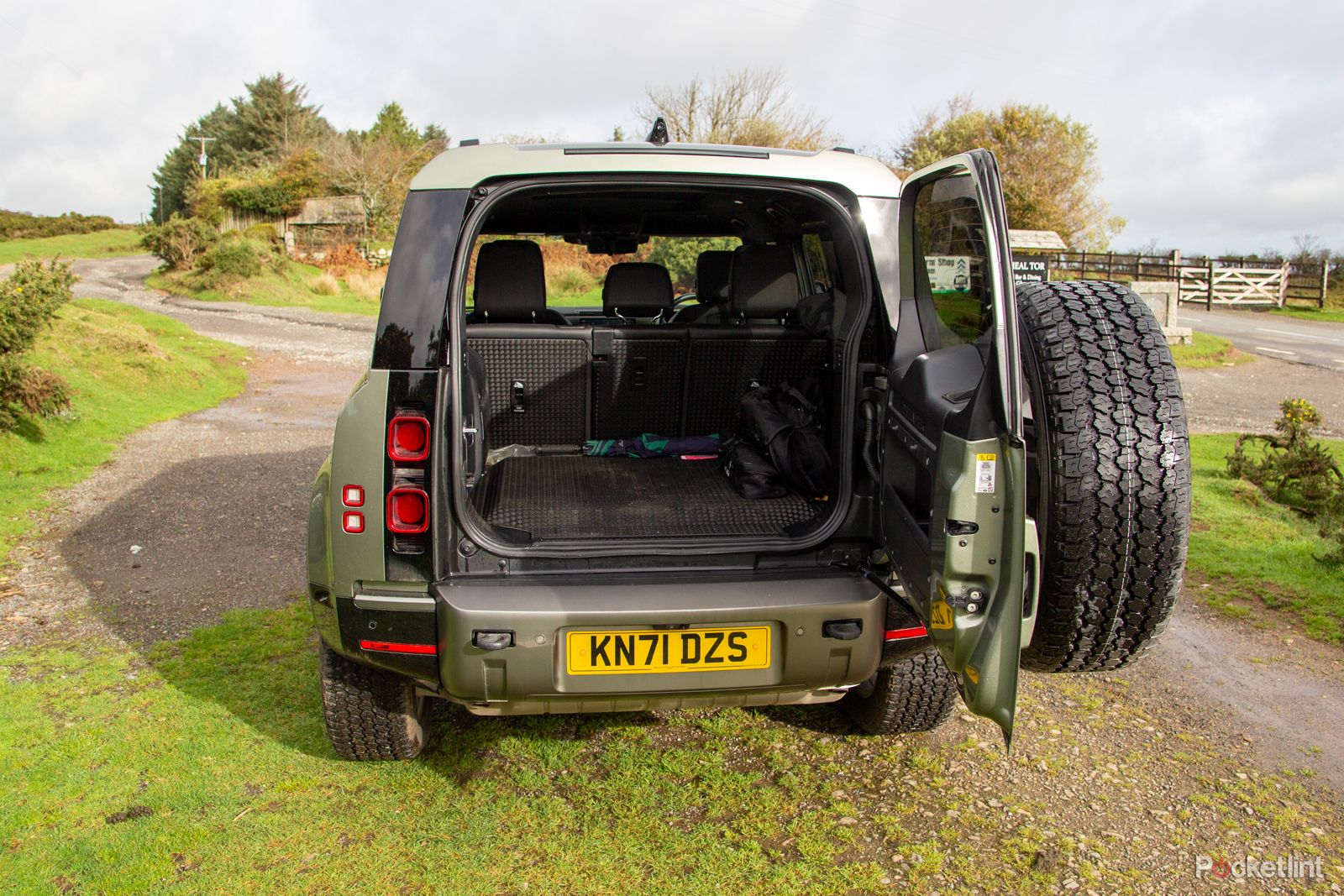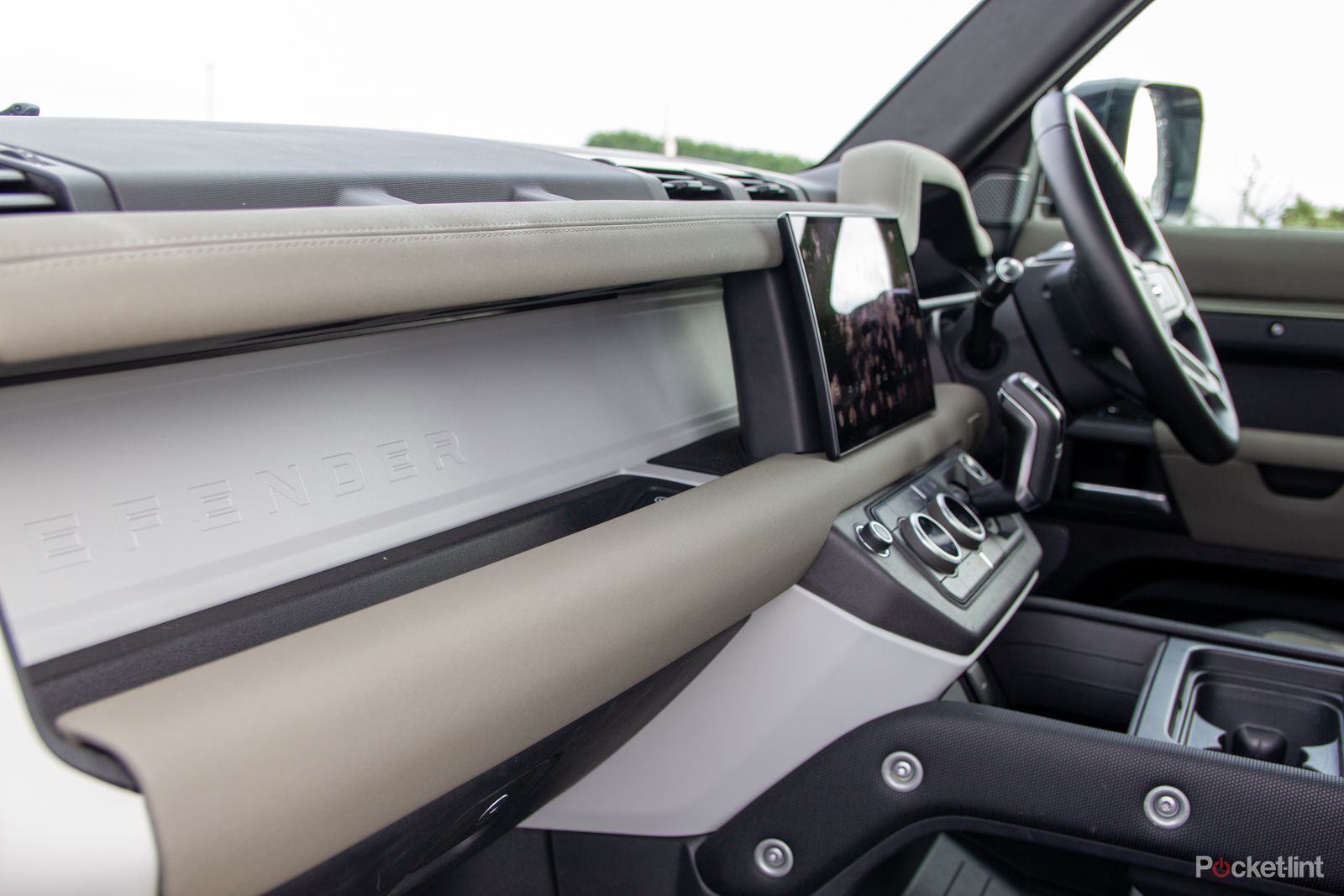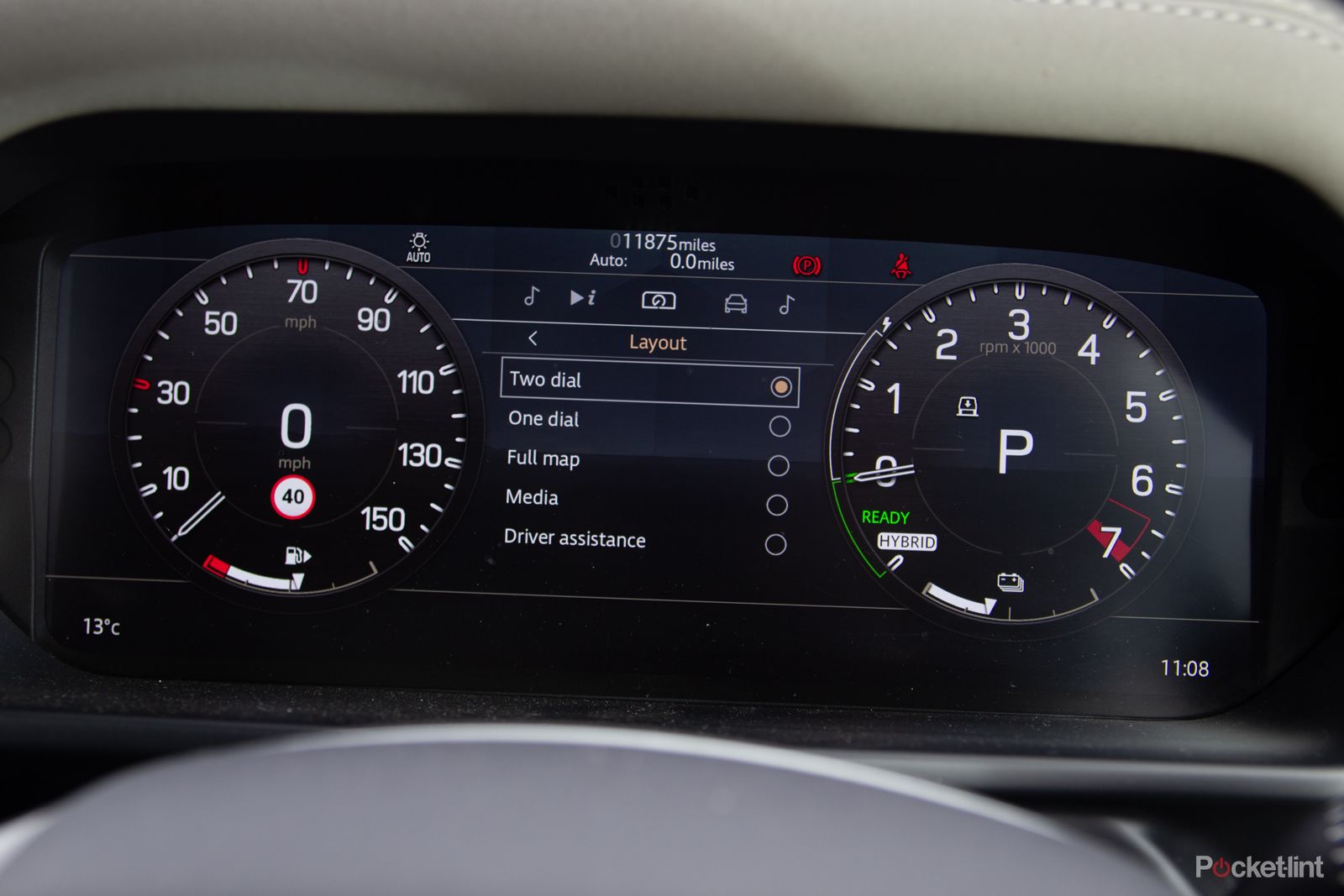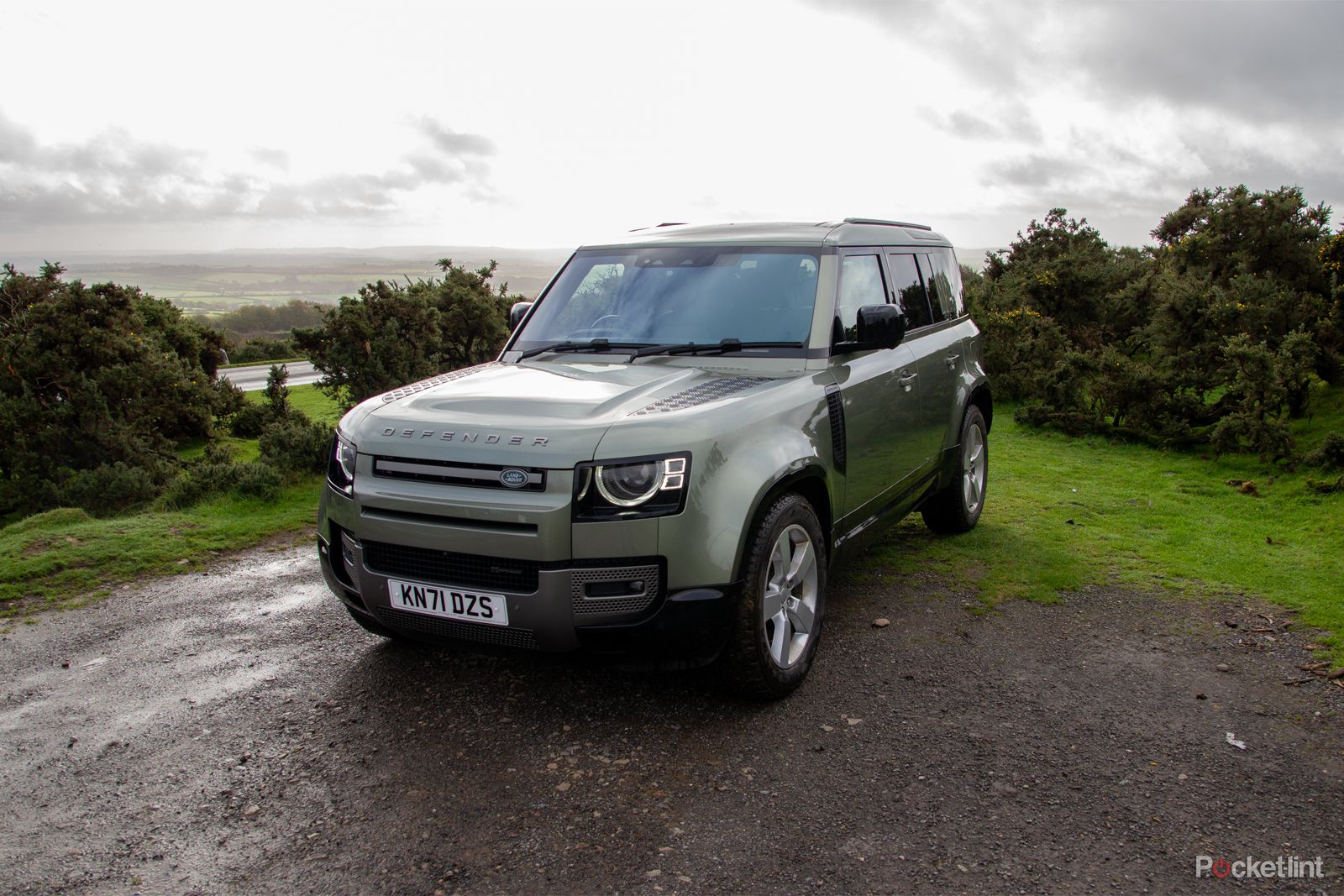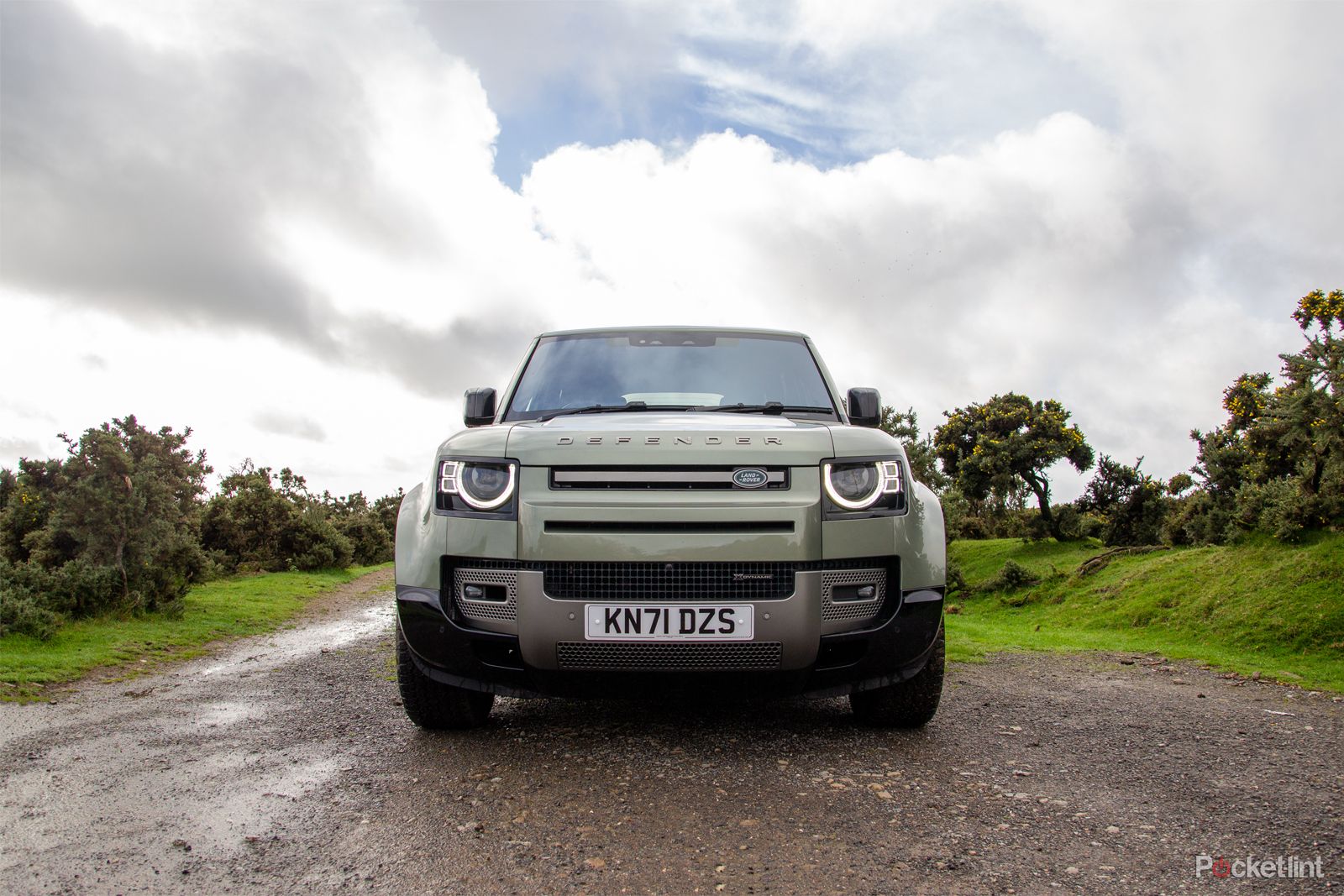When Land Rover announced that it was going to be ending the production of the Defender - effectively drawing a line under Land Rover as we knew it - there was no shortage of trepidation about what would come next.
But to say that the new Defender has captured the imagination of customers would be an understatement, as many have flocked to this new design. Anecdotally, it feels as though people are jumping from Discovery to Defender, embracing the new chunky, almost toy-like design, and the adventurous lifestyle that it projects.
And once you've spent some time with it, it's easy to see why.
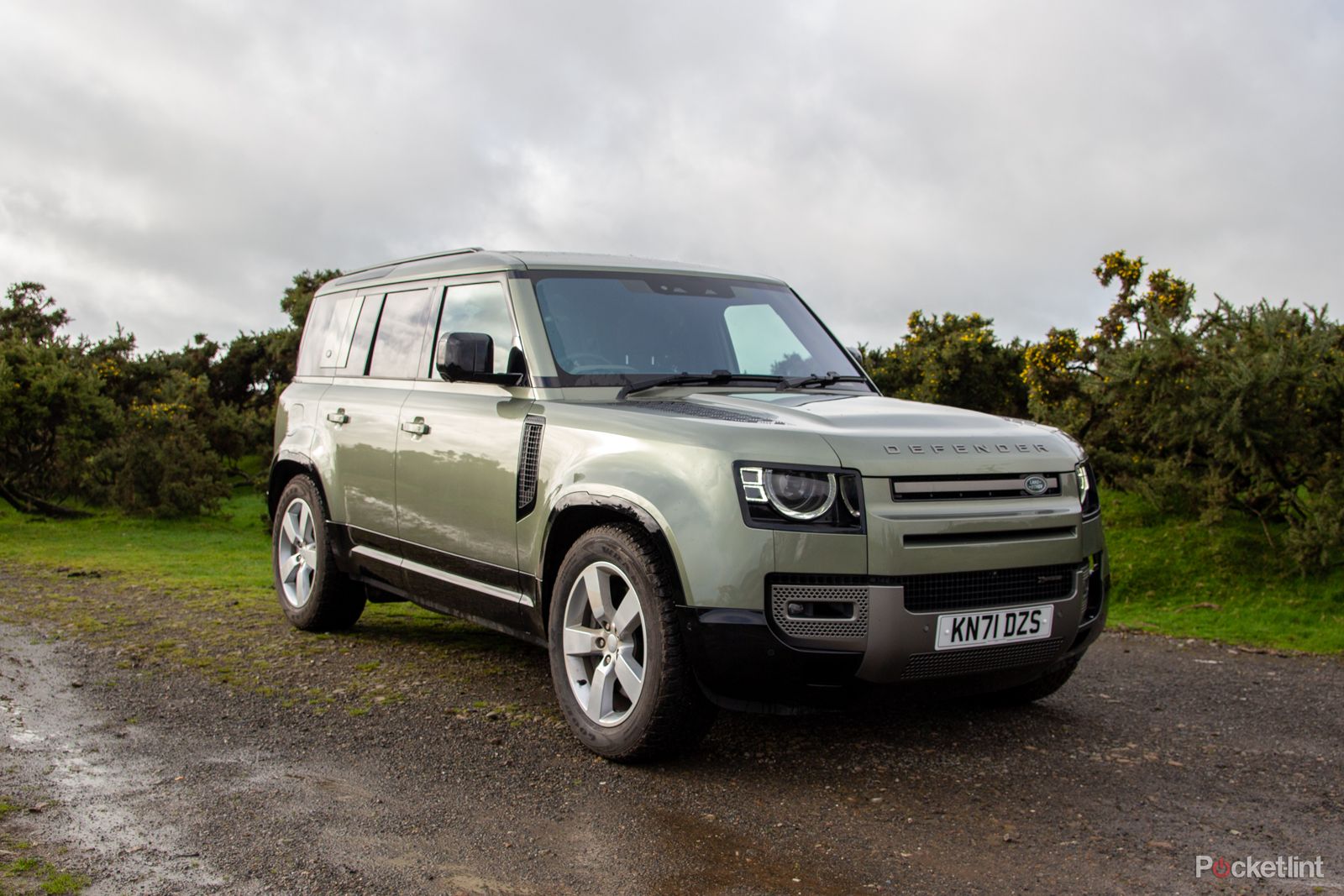
Land Rover Defender (plug-in hybrid)
The new Defender gets a bold new look, an interior with rugged design and retains all its offroad skills. But it's also comfortable, fun to drive, hugely capable on all terrain - and all while being connected. The plug-in version gives you 30 miles of range, boosts efficiency, but there's no avoiding that this is still a big thirsty car.
- Big, boisterous looks
- Connected with all the mod cons
- Great fun to drive - anywhere
- Not very efficient
- It's expensive
- Interior might divide opinion
Design
We're not saying that the Discovery is bad - far from it - but the Defender brings with it a spirit of adventure. It's a projection of one's own self-image, the ultimate accessory that says "I'm pretty hardcore actually". Will these incredibly capable offroaders actually be used offroad? Probably not. In many cases, we suspect that the furthest it will get from the Tarmac is a National Trust car park.
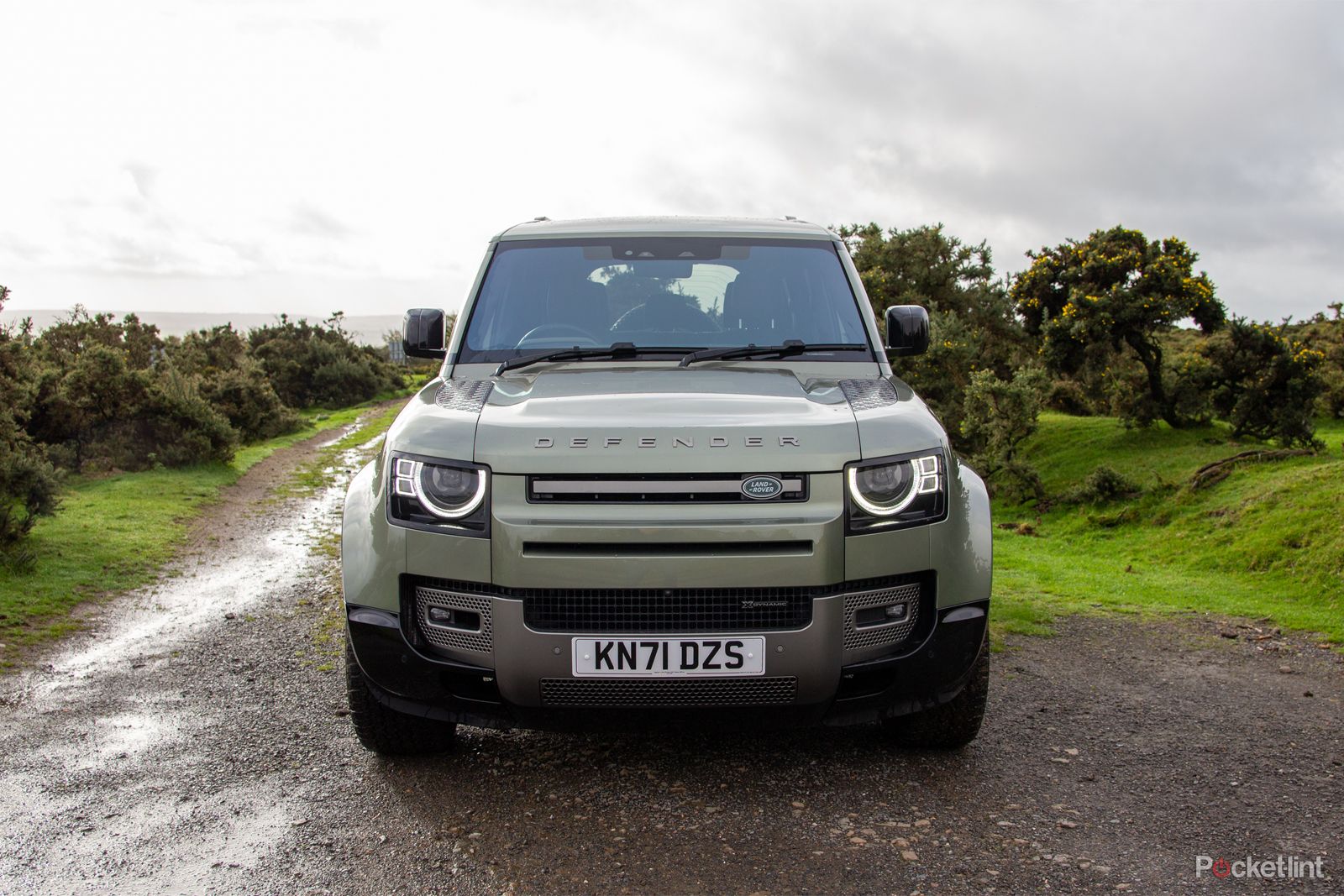
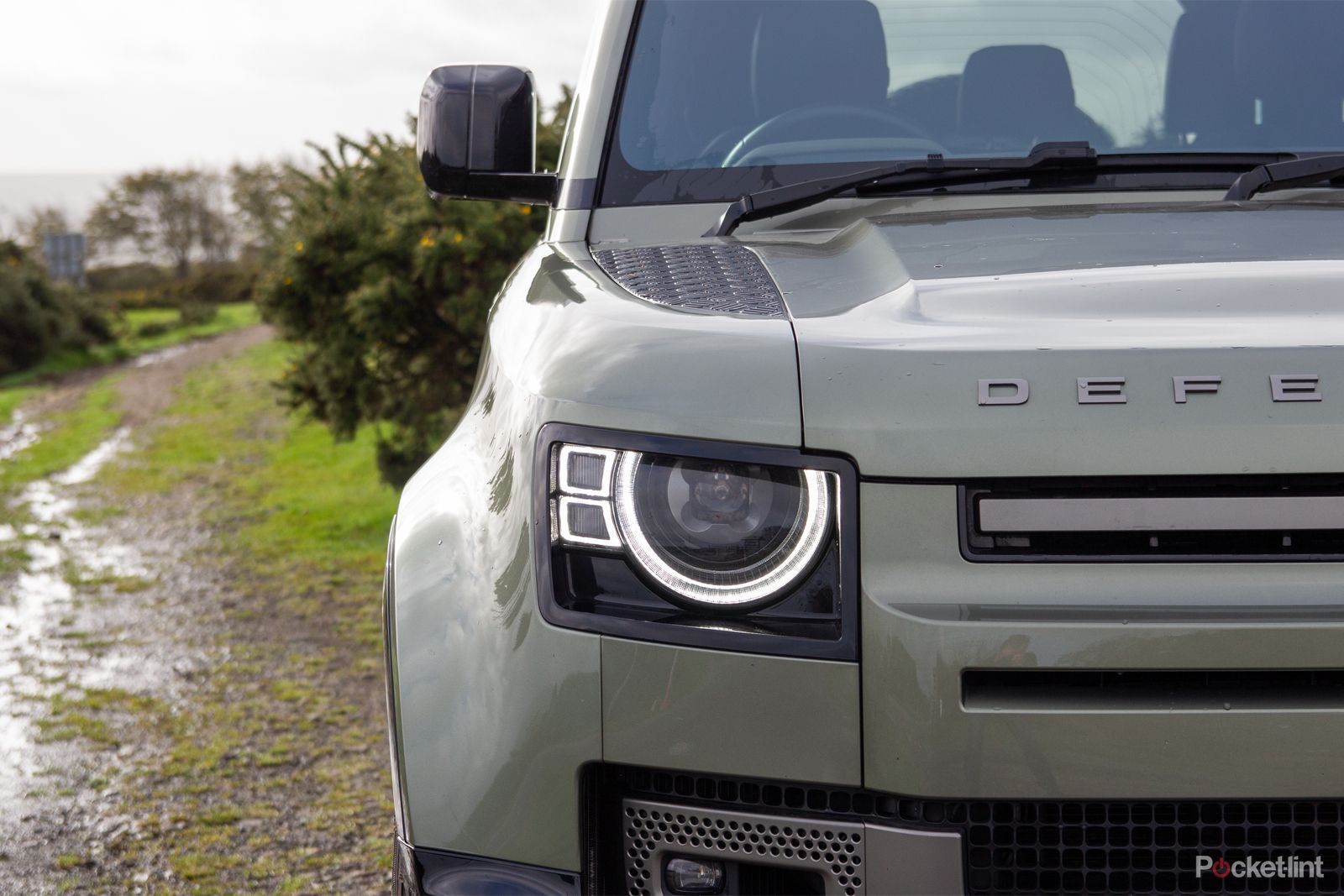
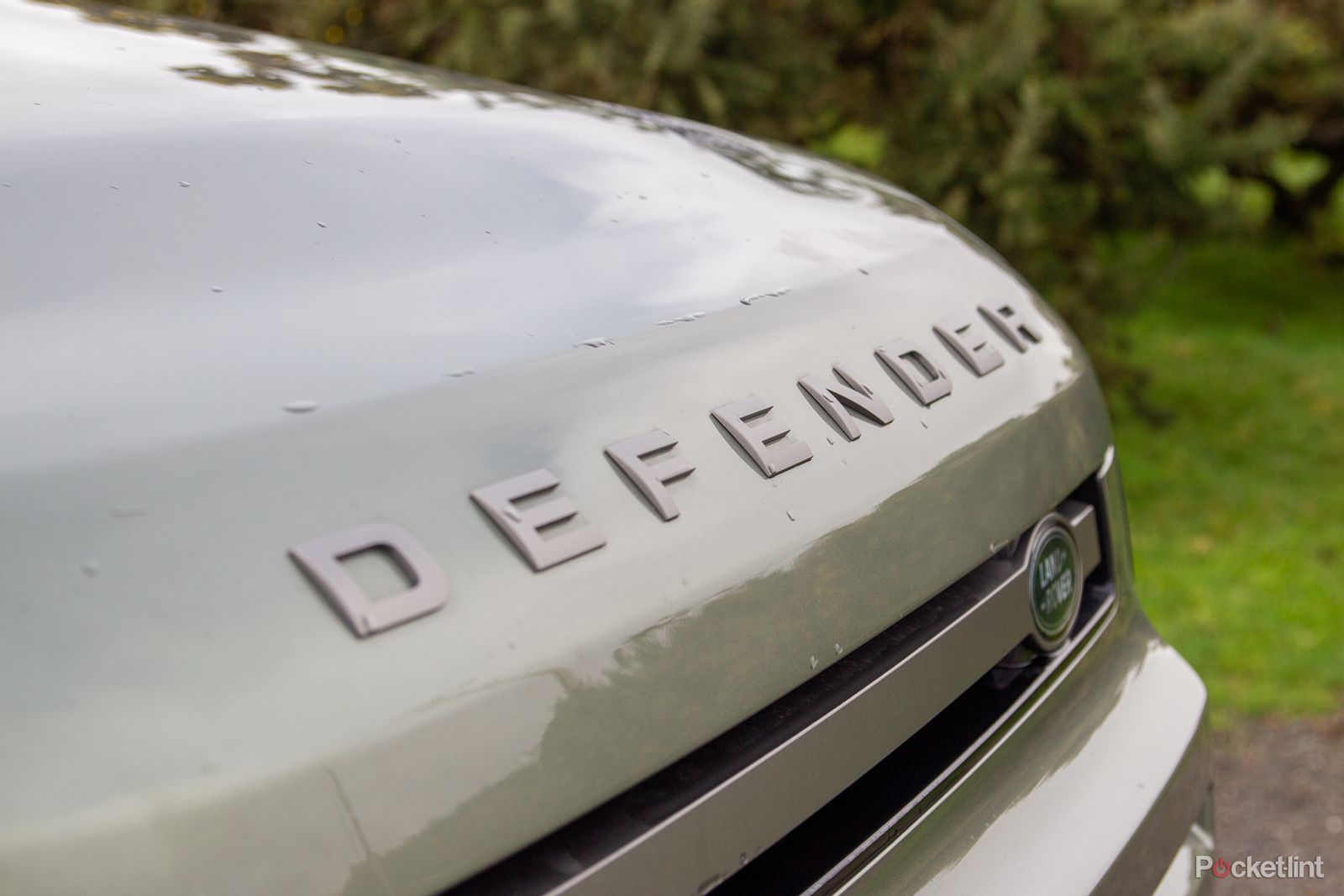
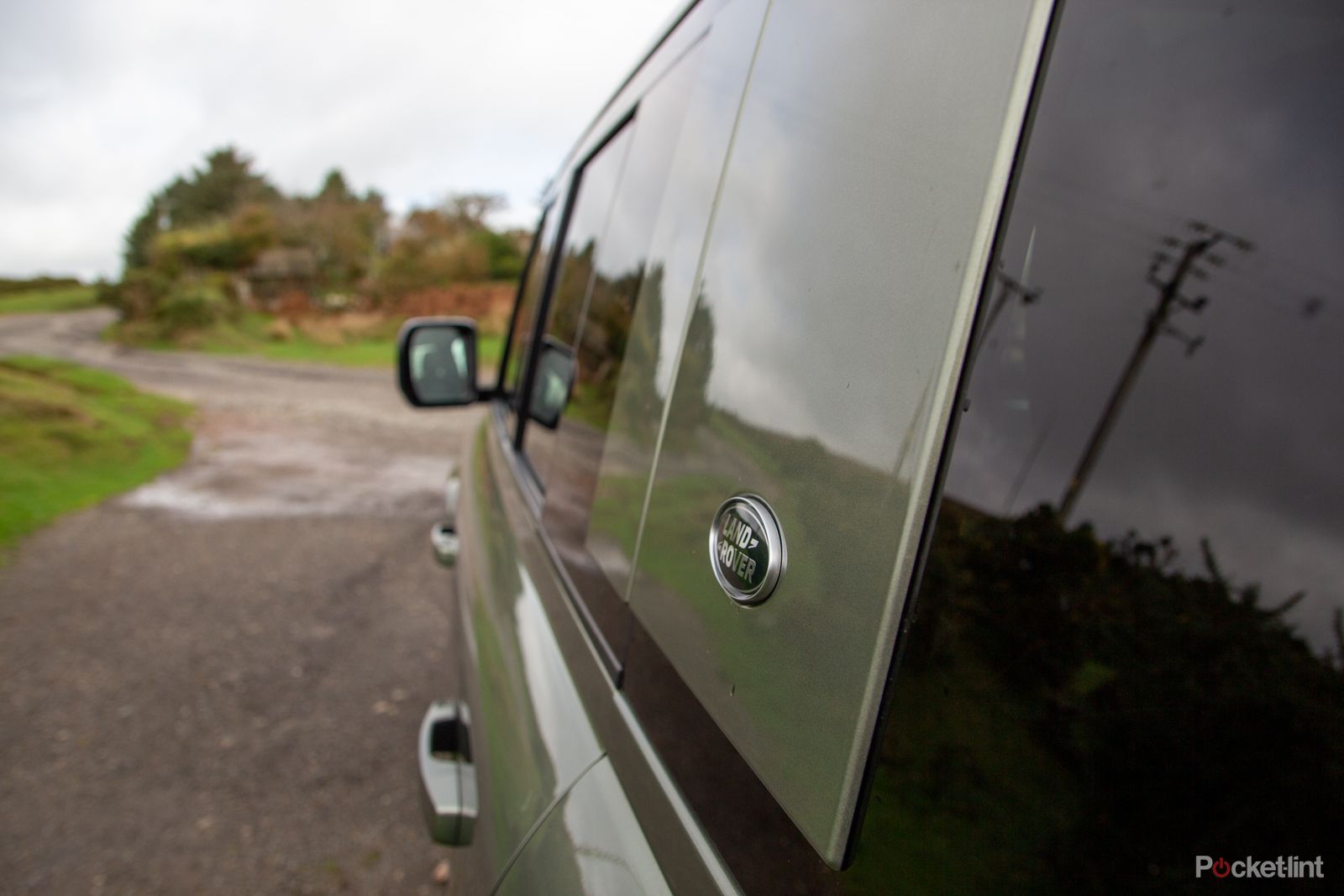
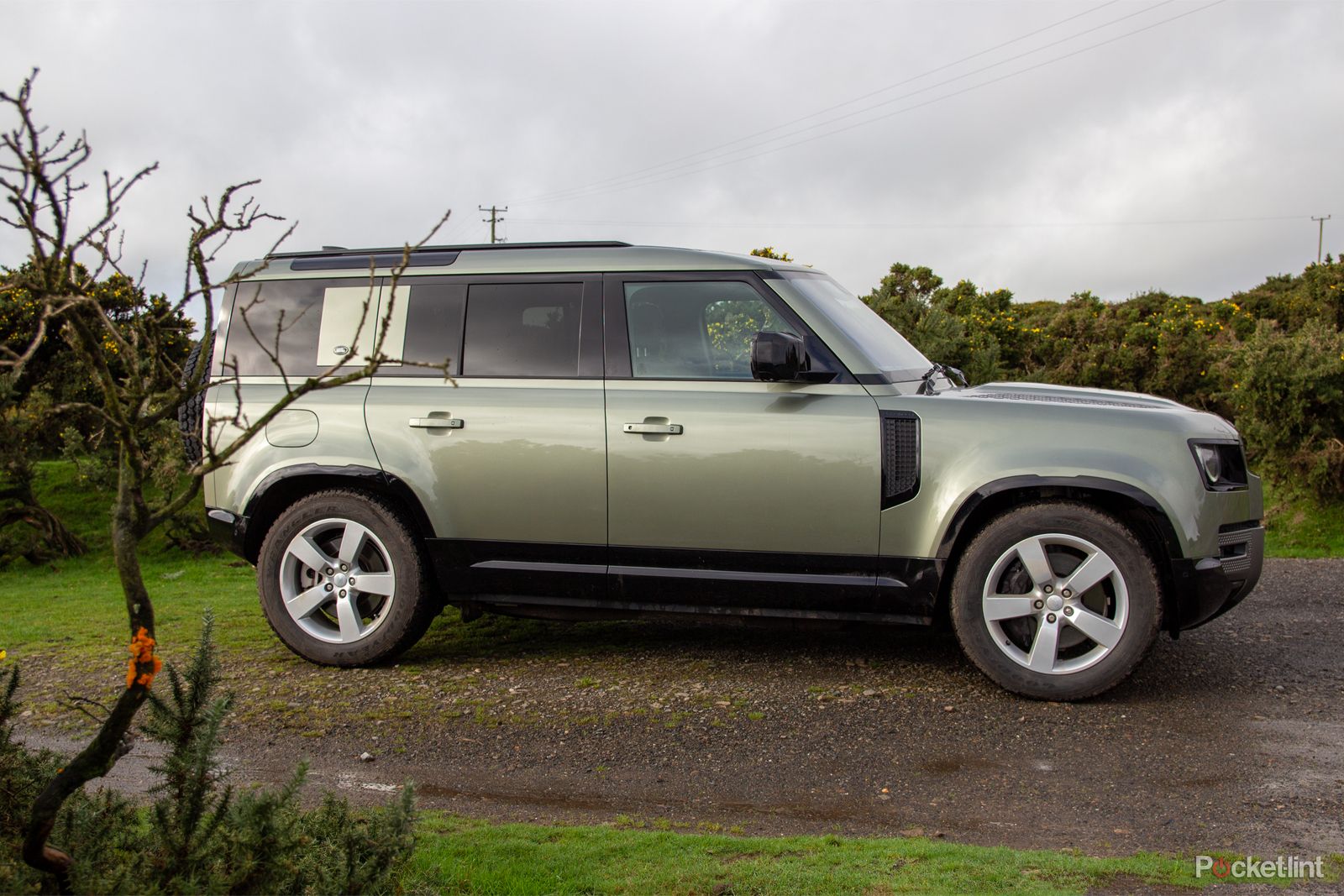
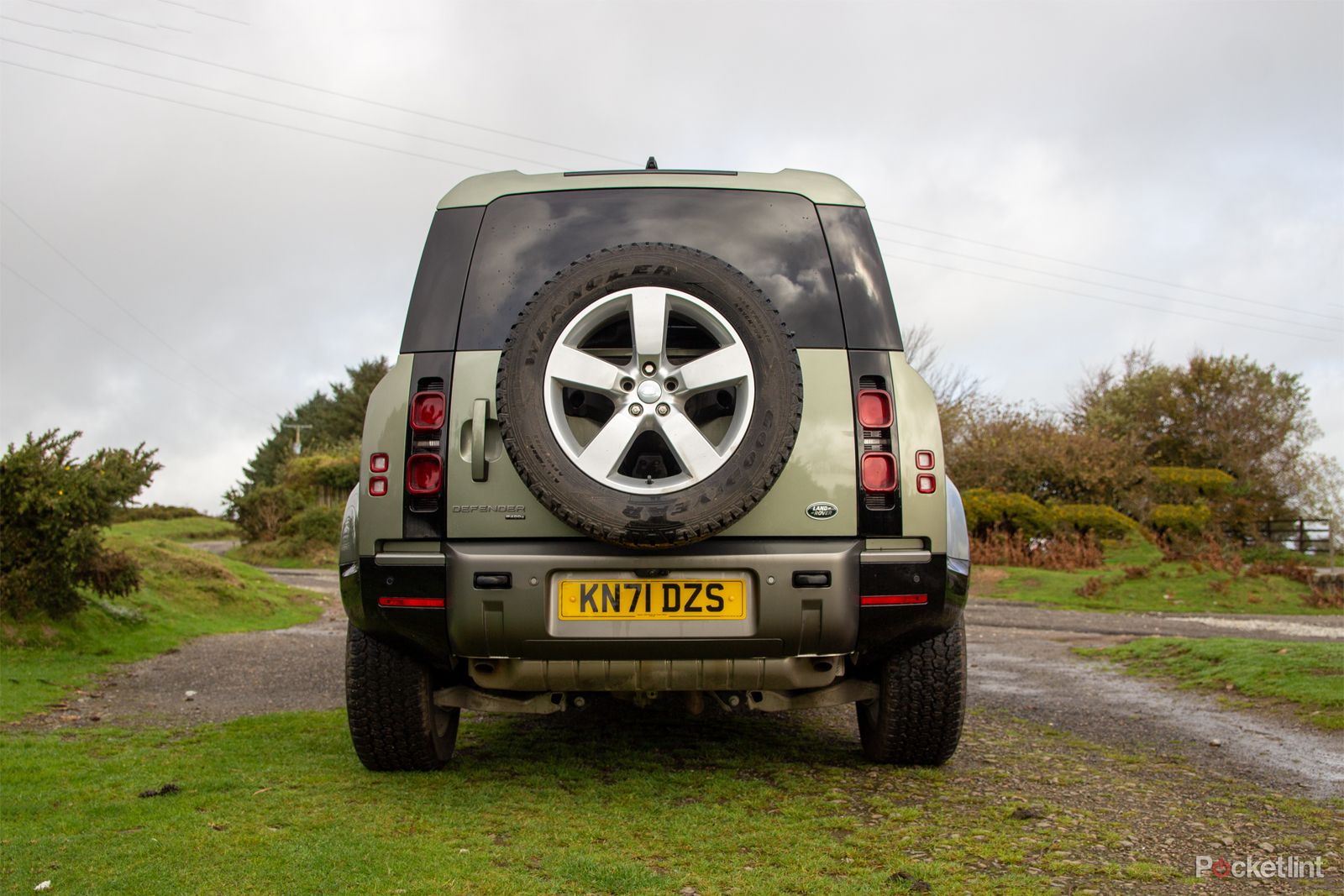
Some of that boxy design from the old Defender remains, but it looks a lot more like a reworking of the old Discovery (before the Discovery moved to look more like the Range Rover). It's really a step and repeat pattern of Land Rover moving everything up the scale, with each model more comfortable and more capable than the last.
Unlike the old, however, this isn't a thin metal body bolted to a ladder-style chassis, it's now thoroughly modern, but some might be surprised to find plastic panels in places, sounding rather hollow to the touch. On our review model, the Defender X-Dynamic S, the rugged-looking checkerplate is just plastic decoration, unlike the slabs of steel people riveted to the Defender of the past.
But whatever wobbles one might have about materials, the looks just grow and grow on you. It's not the old Land Rover, or old Defender, and for many will never replace the love that body shape carried - but we can all agree that the new Defender is something of a hunk.
One interesting detail is the panel set into the rear quarter. This device is something of a signature piece of design, but it is optional - you can have it removed for a sleeker look.
We love the fact that the rear is almost completely flat - with that huge wheel hanging off the back (and worth covering because that wheel will get covered in spray and grime) - with a door that opens for great access. It's a heavy door, and for all we love the design, if you're on any sort of slope, it's more of a challenge to operate. It's also slightly less practical when it comes to things like loading shopping in a tight car park - it's just a little easier with a hatch-type rear door, but where's the adventure in that?
The Defender continues to offer three different sizes - 90, 110 and 130 - and it's the 110 that's the most practical for family buyers, and on review here. There are also plenty of options for customisation to make the Defender your own, with accessories and different trim levels that will alter the looks slightly, but not to a huge degree.
A mixed interior
If it's rugged that you're after, then the interior will deliver that. Exposed bolt heads are rather rare in modern cars, but the Defender goes overboard on them. The dashboard integrates a tray that basically spans the width of the car, ideal for dumping all sorts of junk in. Land Rover probably thought that it would be great place to drop your walkie-talkie or your gloves when jumping back into the cab, but we suspect it's mostly home to tissues and travel sweets.
What the Defender doesn't do, however, is try to match the luxury that the Discovery and Range Rover offer. Wider use of plastics make for easy cleaning and reflect a car that's designed for a more utilitarian life. That makes sense, but there will undoubtedly be some who look at the price, look at the interior design, and buy an Audi Q8 instead. Rubber-lined footwells rather than plush carpets give the impression of a vehicle designed to be hosed out, and while that might not fit perfectly with some buyer's idea of urban living, it's certainly practical if you've got kids who like to make a mess.
It doesn't need saying that the new Defender is more comfortable than the generation it replaces - it's a different galaxy of comfort because the old model was limited. It's a modern car with that playful rugged interior and no shortage of convenience and connectivity.
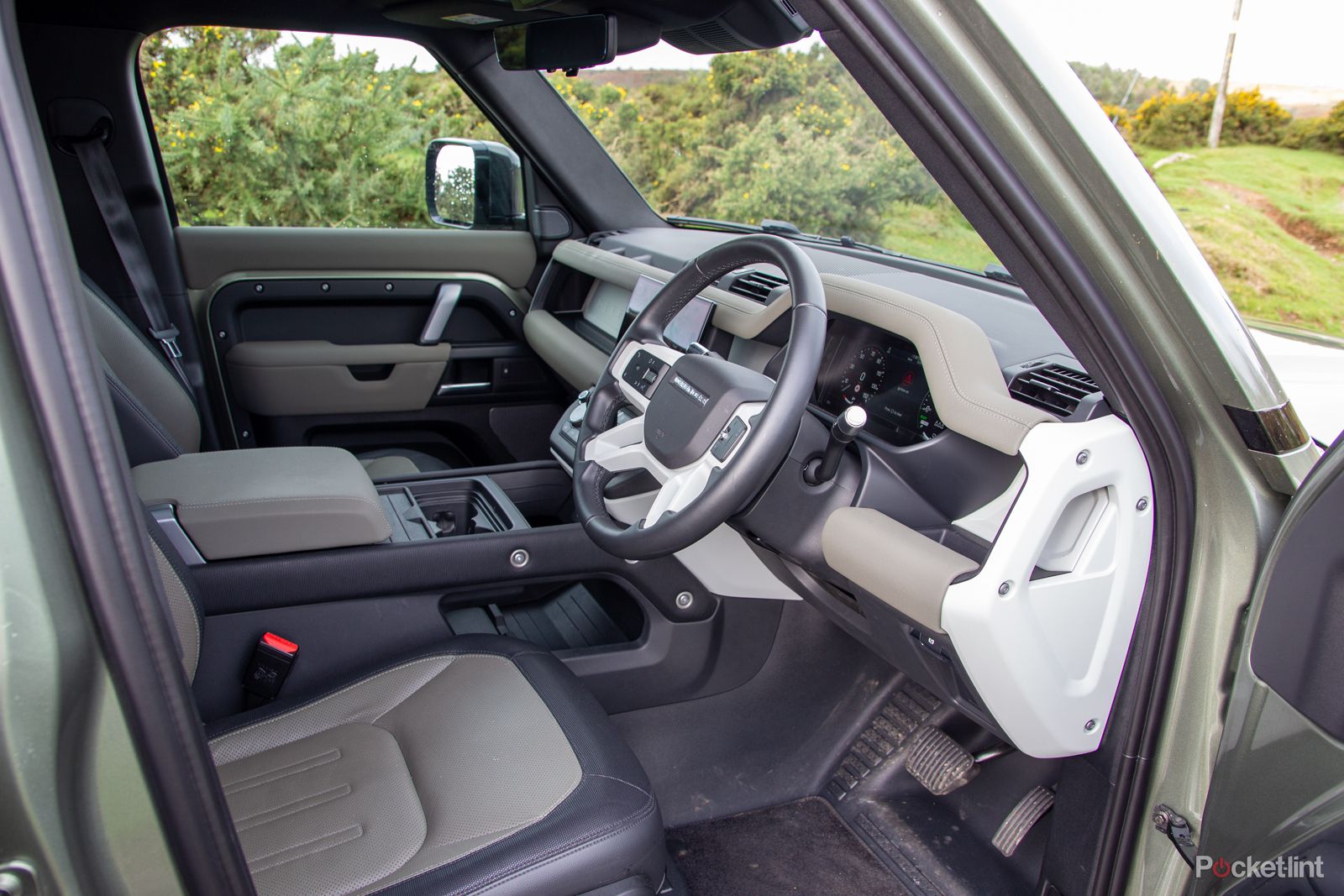
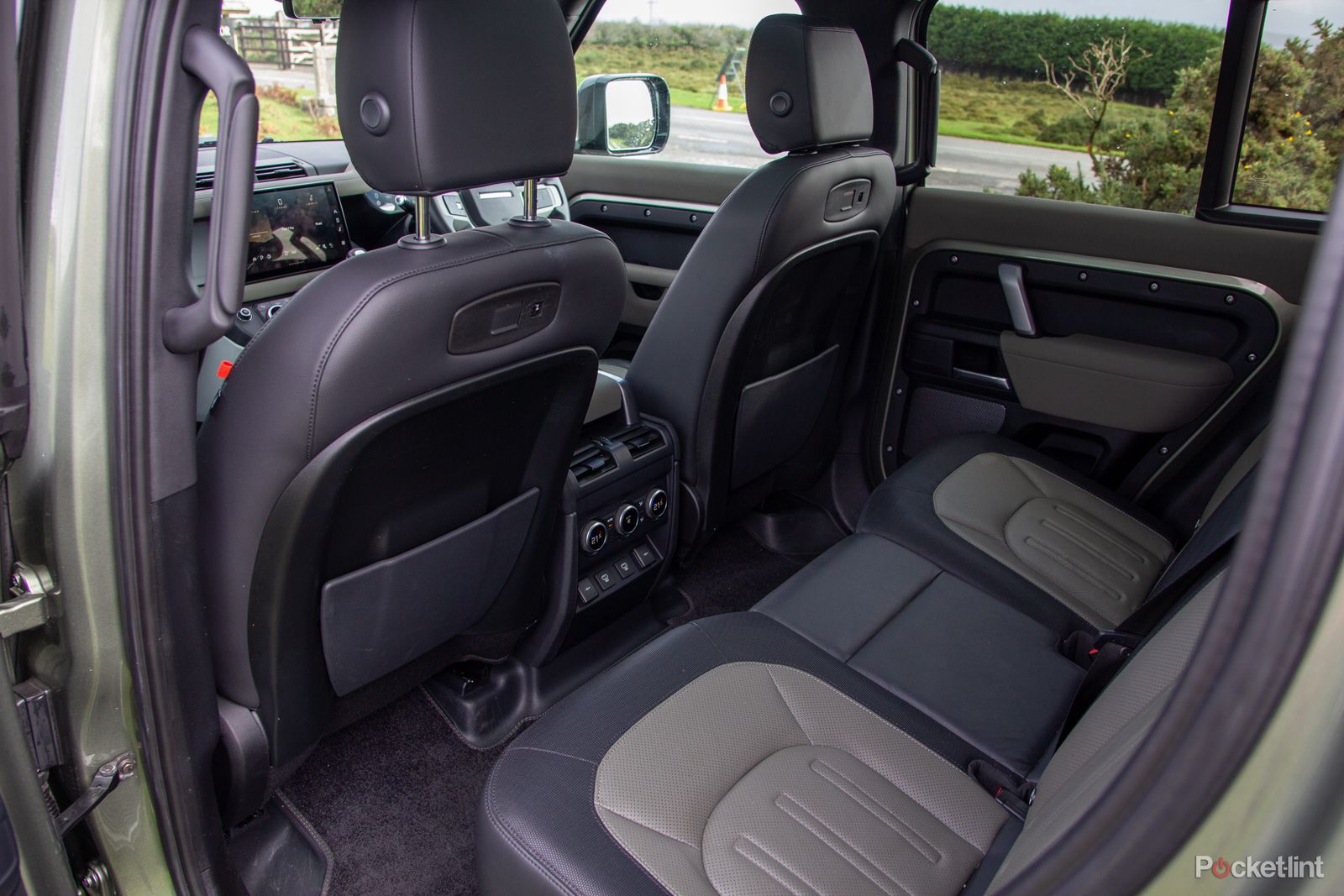
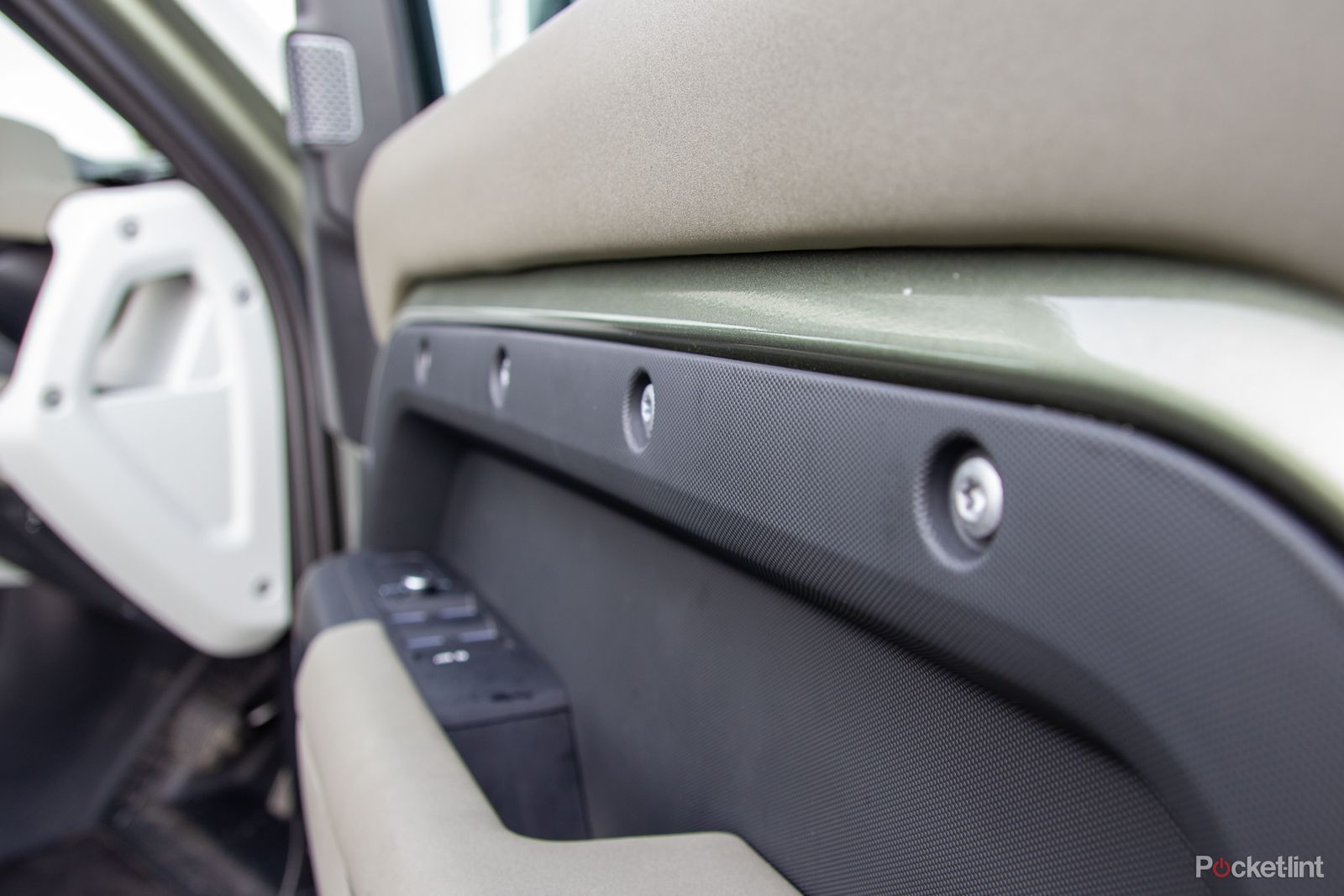
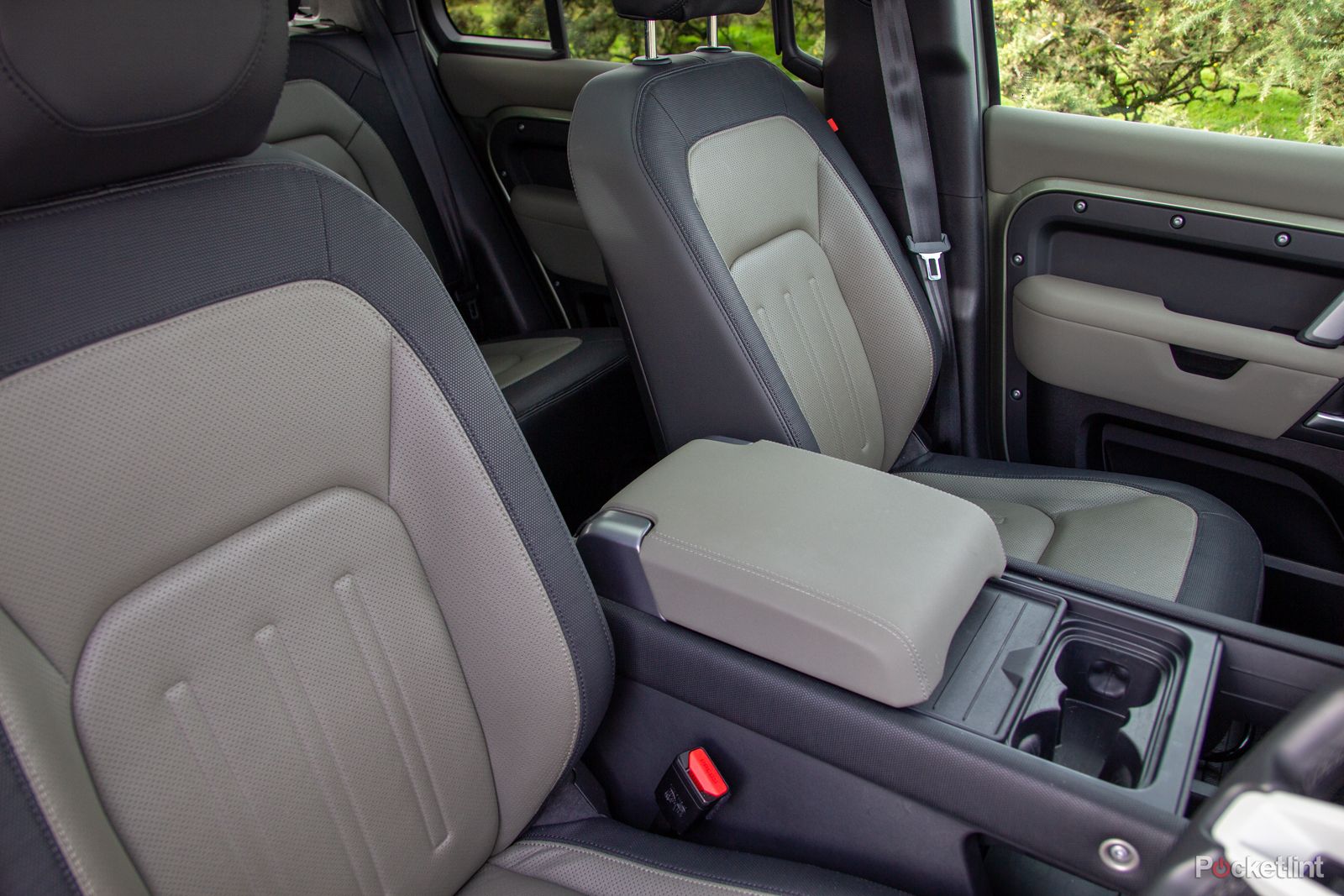
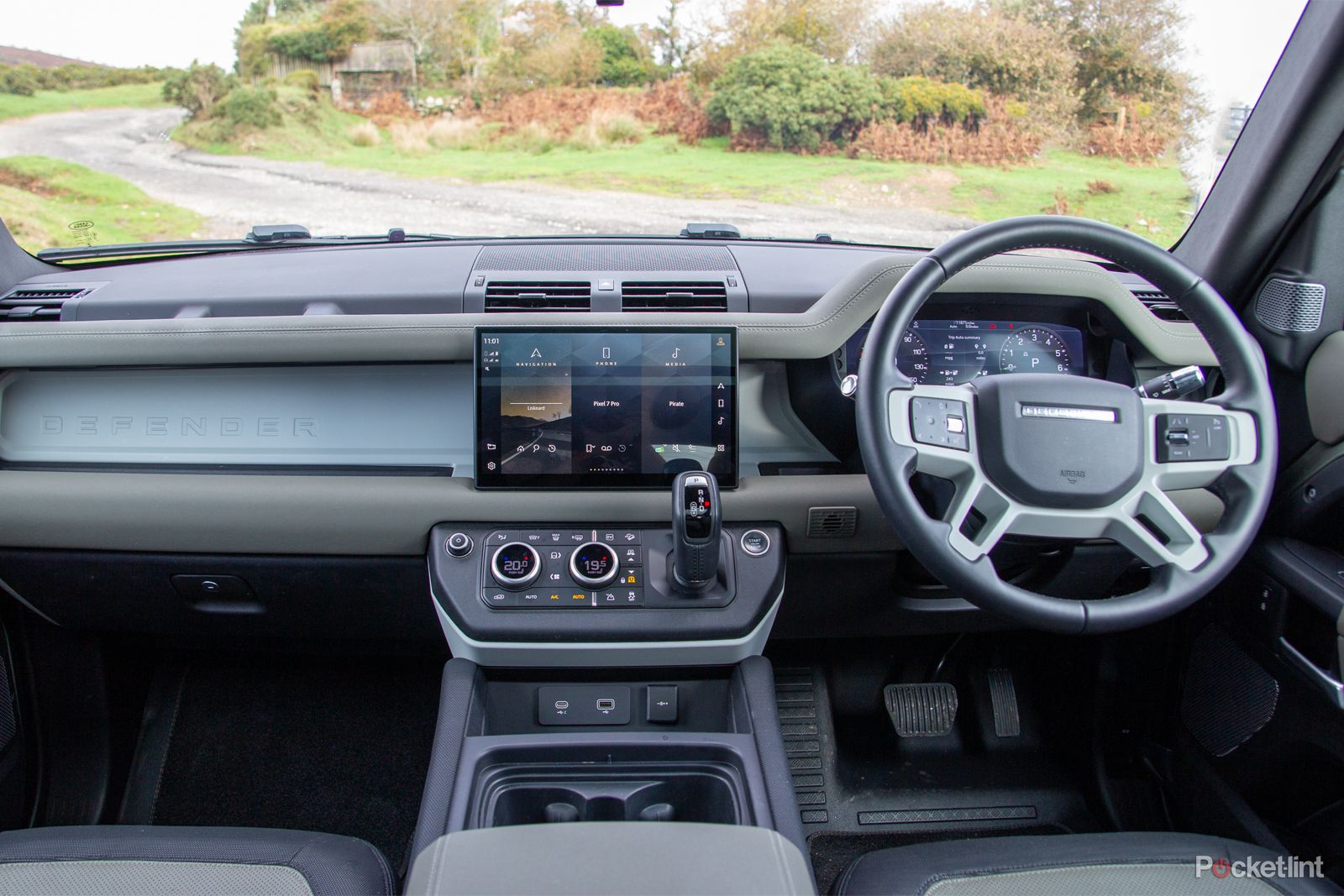
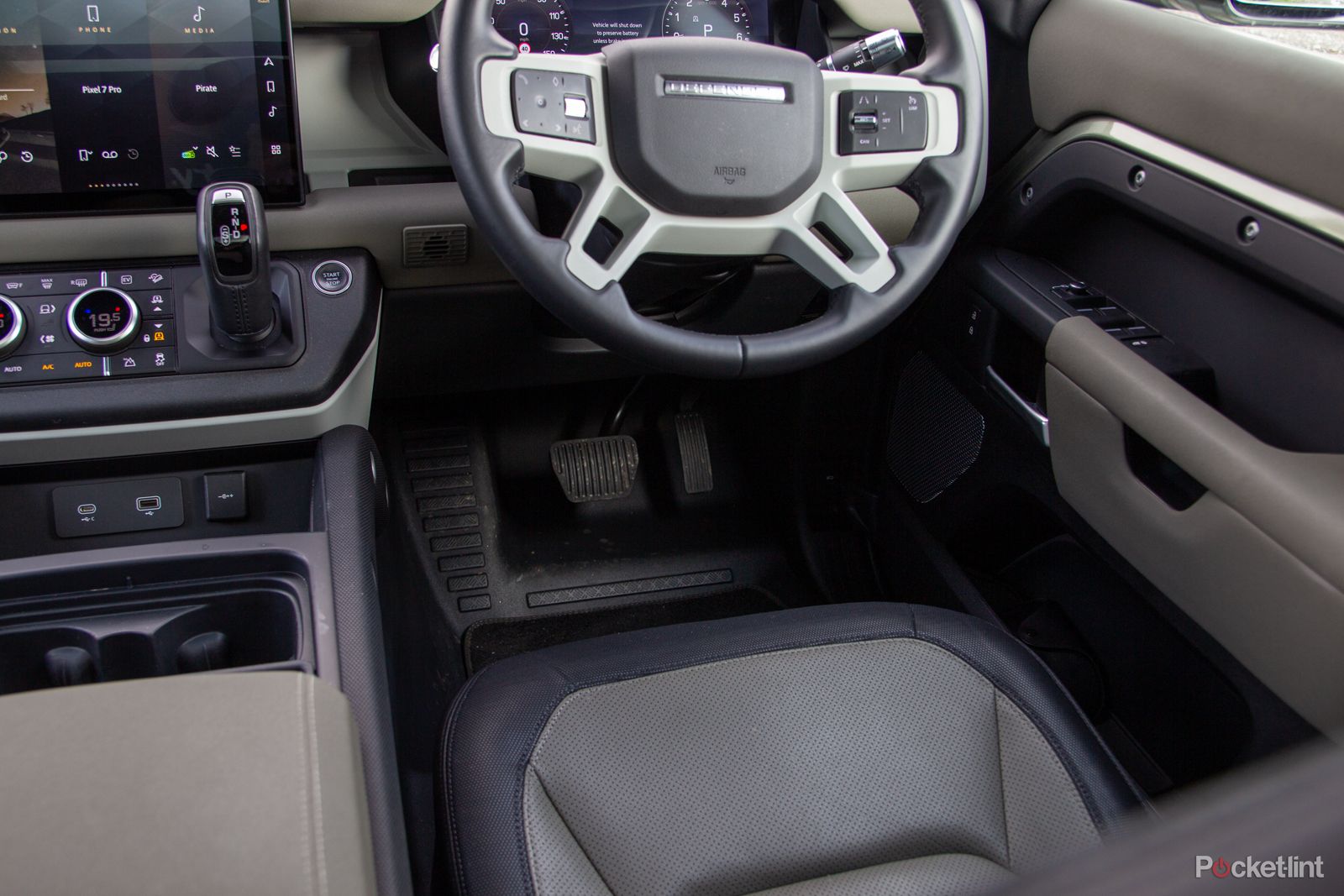
It's also spacious, especially for those in the front row. The second room has no shortage of space for the passengers, but the rear perhaps isn't as large as you might think at first and if you're used to a station wagon or estate car, you might feel that the load space of the Defender isn't quite as practical. In the PHEV version the battery sits in the floor of the rear load space, raising it slightly, so there's a slight bulge in the floor too.
But let's not beat around the bush, it's deeper that most SUVs and the flat roofline means you can pack it up to the ceiling. In this sense, the side-opening rear door comes as an advantage, because you can pack in your stuff without worrying about a sloping rear window that might smash if you slam it on something solid.
There is the option for a jump seat in the front, so all the controls are on the dash, and there's nothing on the centre console to get in the way. There's a centrally mounted display, which comes in 10-inch as standard, expanding to 11.4-inch with an optional upgrade, with the bulk of physical controls mounted beneath in the dash, easy to access and logically laid out.
A closer look at the tech
Considering where Defender was when it came to technology and where the new Defender sits, again, it's a world apart. Essentially, the new Defender runs the same system as you'll find in other Land Rover and Jaguar models - and that's Pivi Pro. This is based around touchscreen control, by default splitting the display into navigation, phone and media, while also supporting Apple CarPlay and Android Auto.
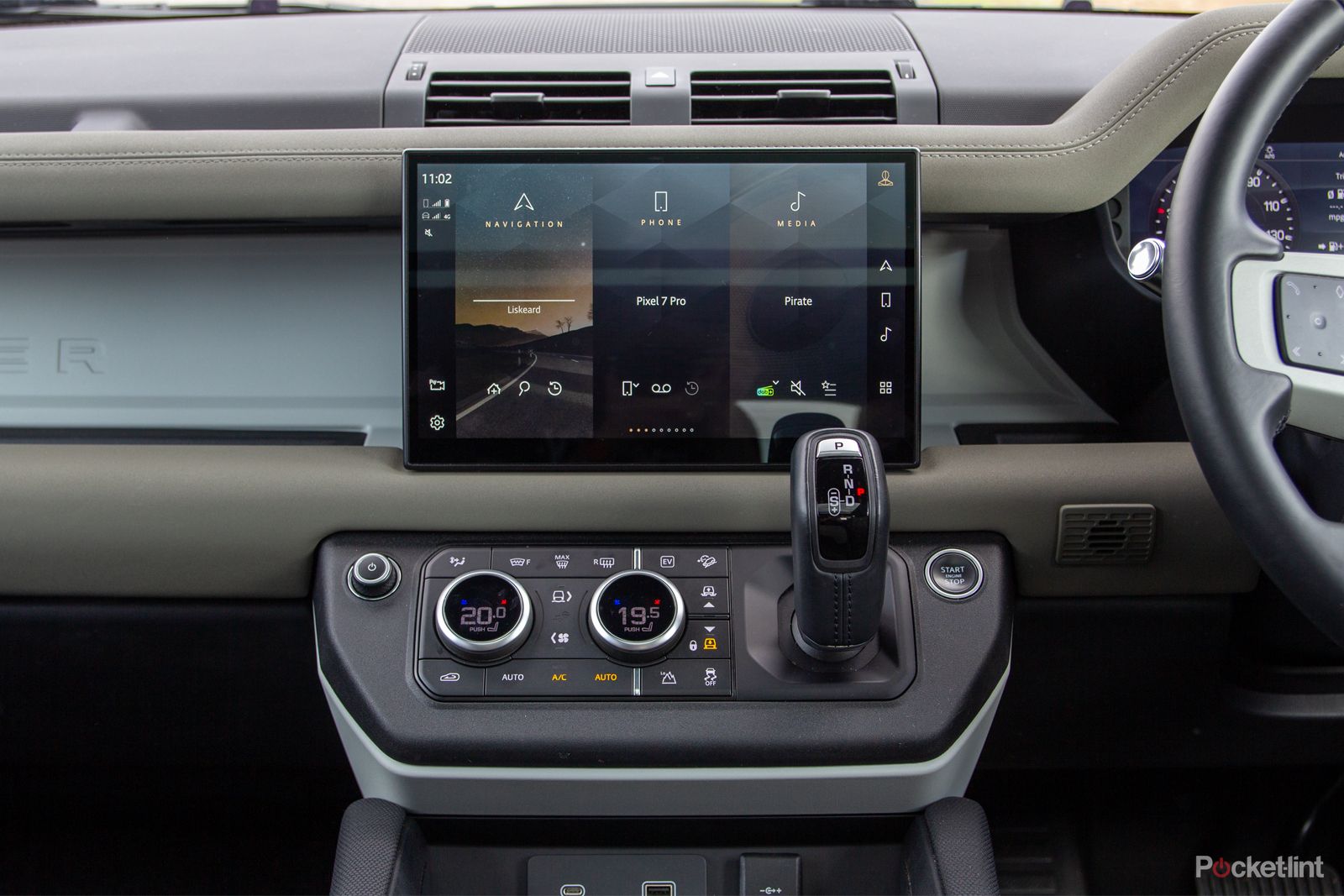
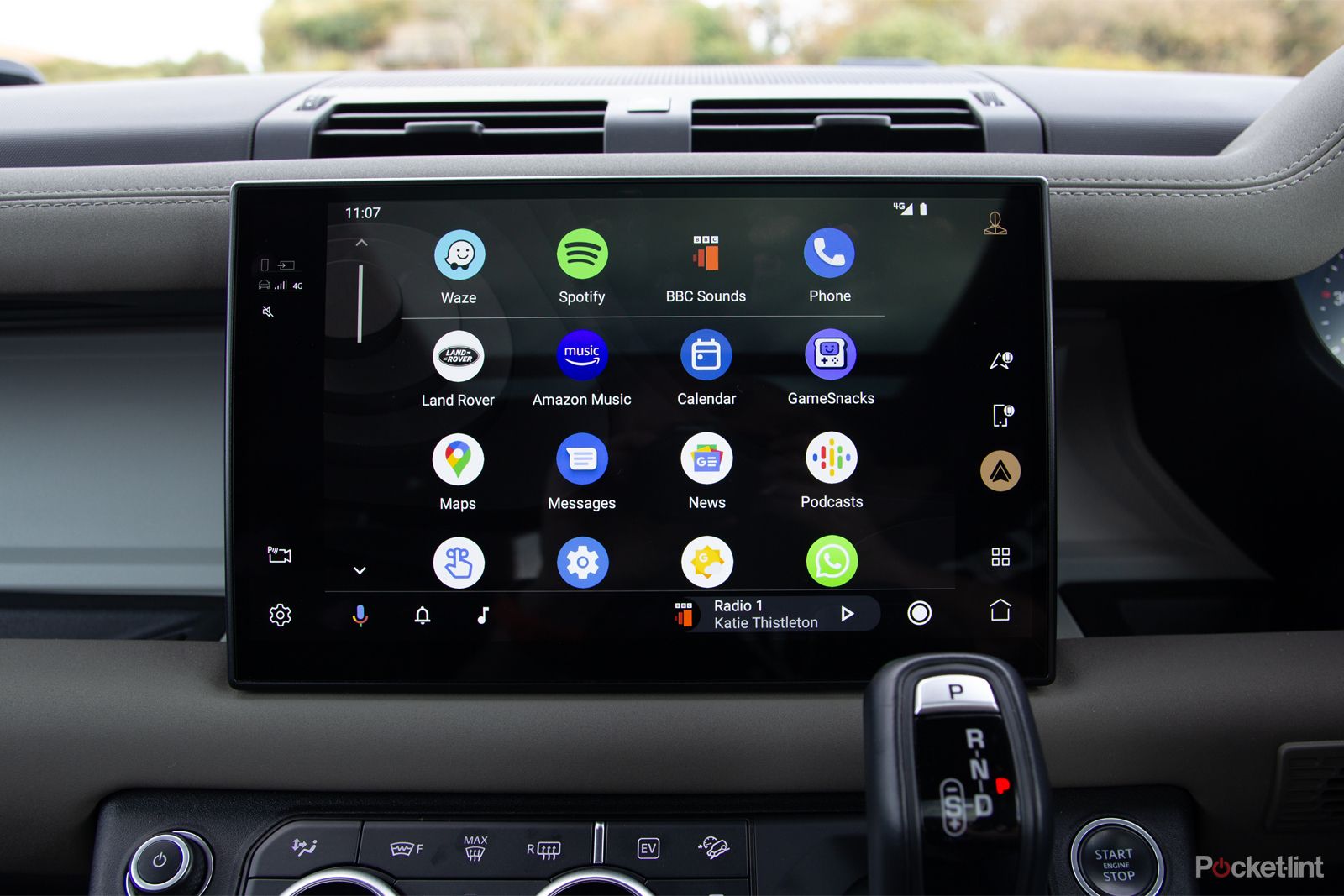
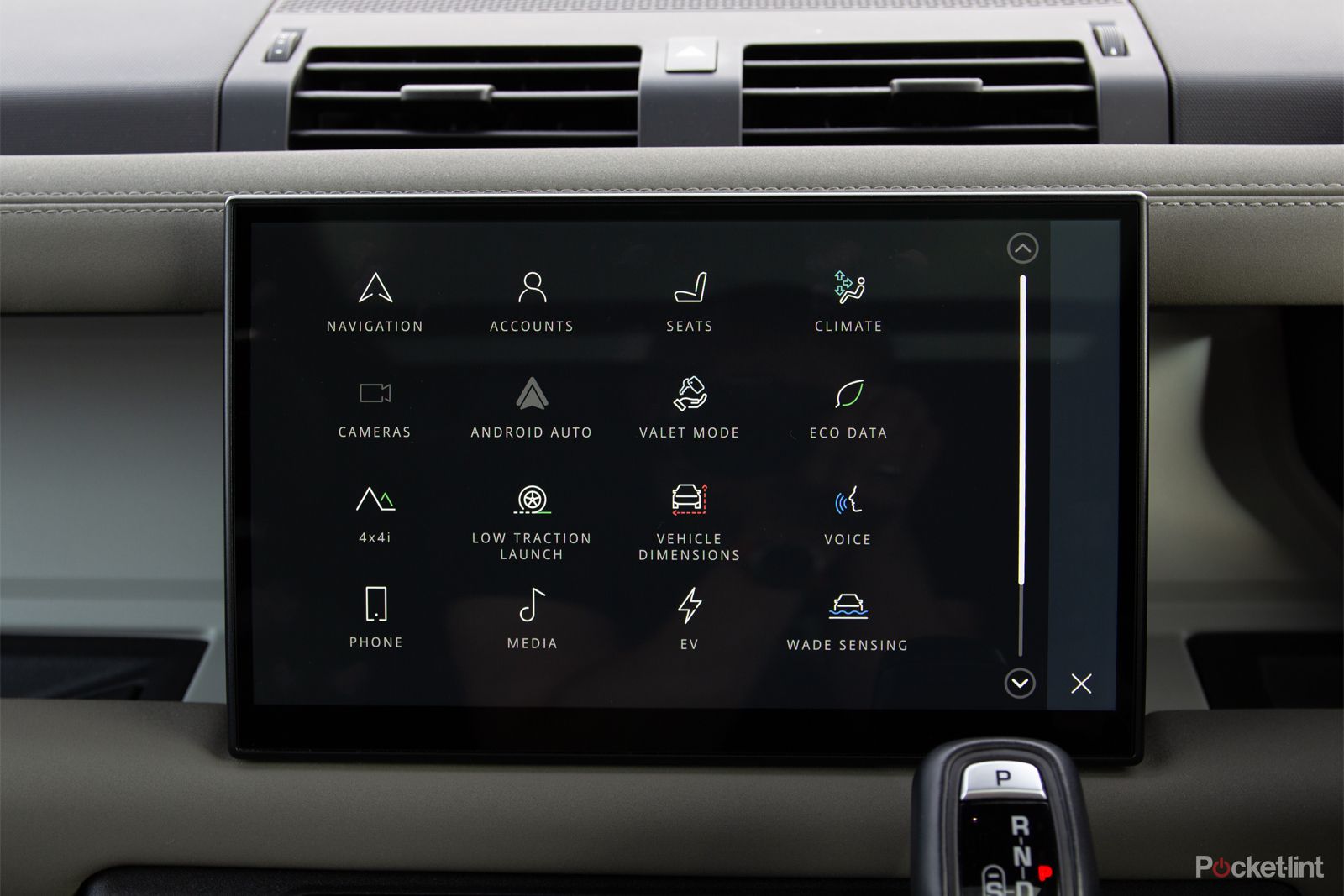
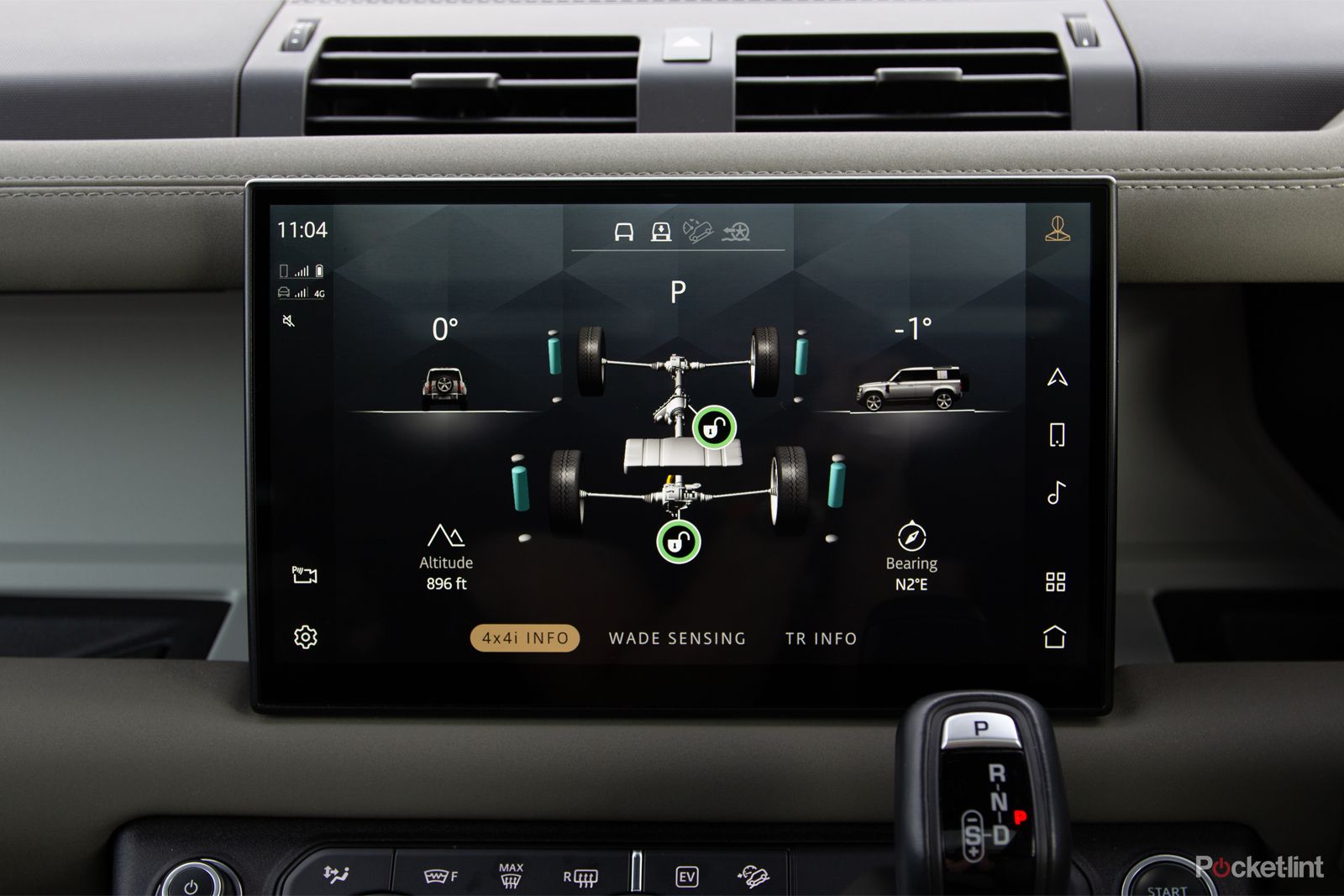
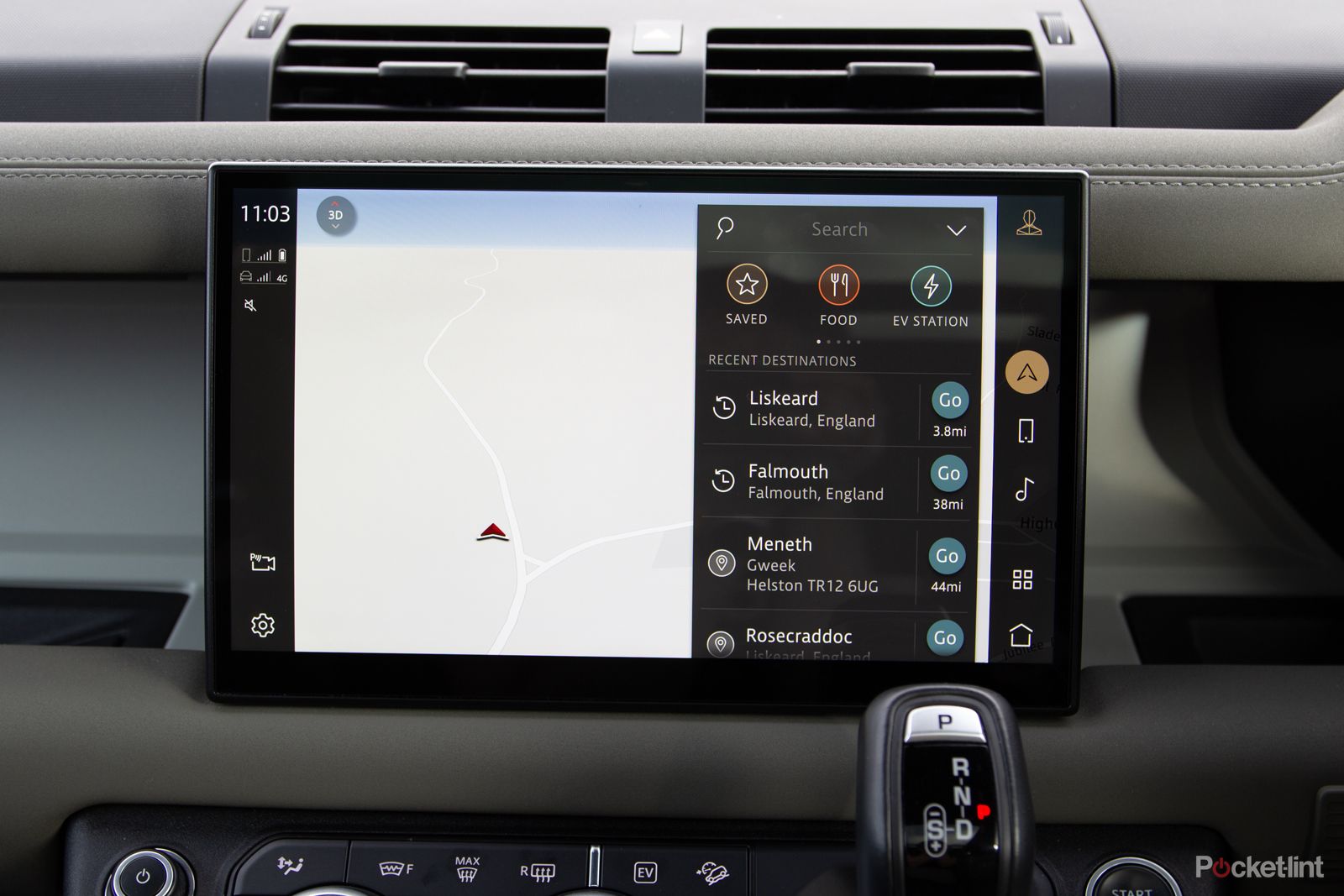
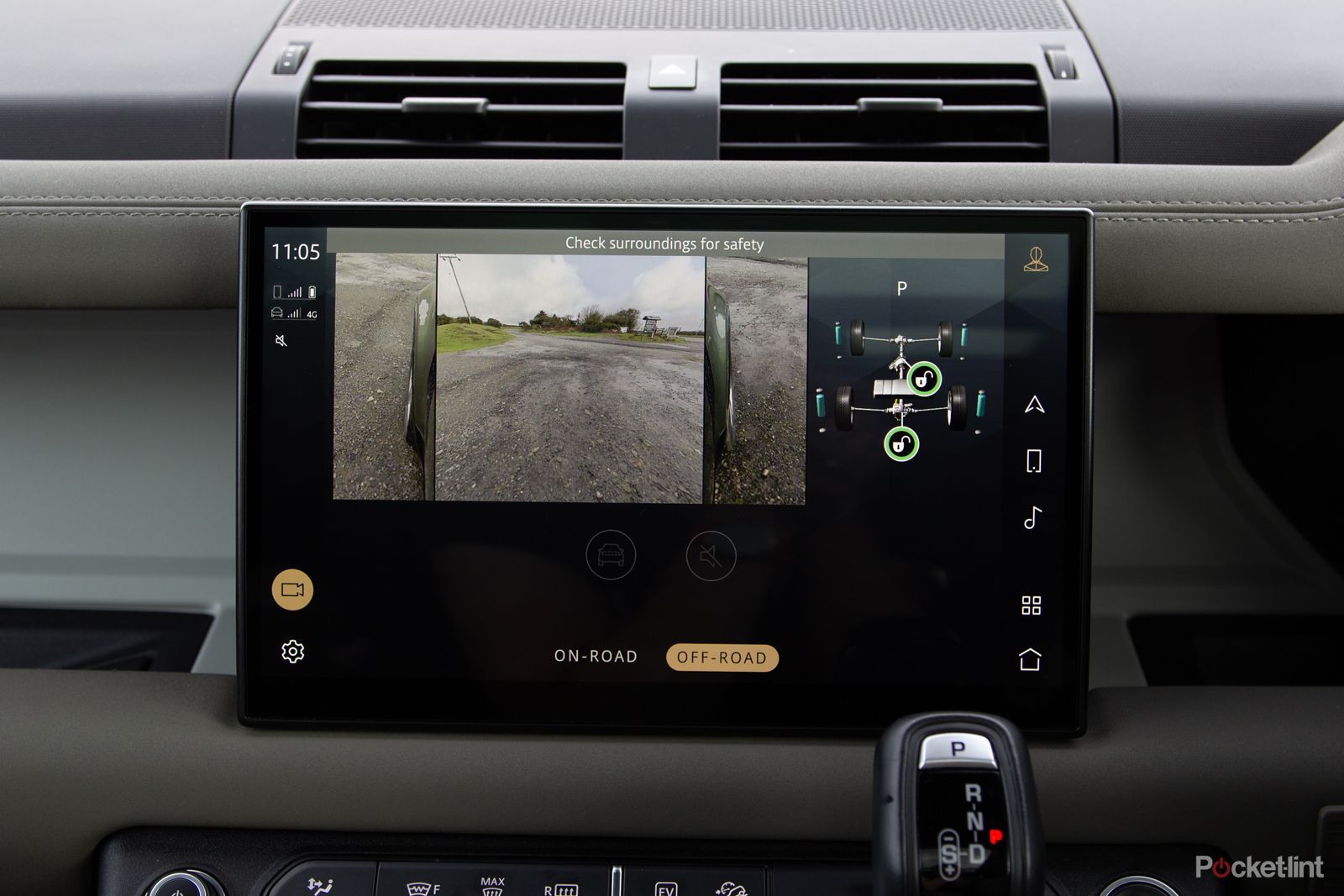
The use of haptics might catch you out, needing a little more of a positive press to select things, but we suspect that many will connect via their phone and then rarely use the system provided by the car which is often the case. It does, however, give access to controls for the offroad functions, as well as being a great display when the cameras are in use - both on-road and off.
The 360 camera that Land Rover offers is great and while you might think it's going to be essential for green laning, we can confirm it's excellent for making sure you're perfectly central in parking spaces, which is what we suspect most owners will use it for.
The driver's display offers some customisation, allowing you to shift around the configuration to your preferences, but is otherwise easy to get around, with support from controls on the chunky steering wheel. Additionally, for those wanting to charge their tech, there are USB-C points both front and back so you can easily plug in.
Power and driving
The Land Rover Defender offers a number of different powertrain options, but it's the plug-in hybrid we're most interested in. The system isn't entirely novel as we've seen the P400e designation on other models, notably the last-gen Range Rover Sport. The system here pairs a 105kW motor with a 2-litre petrol engine, for a combined output of 404PS.
That also means there's a plug on the hind quarters and you'll realistically get about 30 miles of range from the 19.2kWh battery. That might not sound like a lot, but if you're running to the supermarket or commuting, it might just be enough. It also has the added benefit of regeneration on braking, putting some of that energy back into the battery so there's a feeling that you're wasting less.
That boosts the efficiency in stop-start driving (compared to driving a regular combustion model), and means you can swing the emissions in your favour - as long as you are actually charging the battery and driving it in hybrid mode, of course. Once you're out of urban areas and away from a charging socket, you'll find the battery drains quickly and is then just dead weight - and such is the life of living with a plug-in hybrid.
But there's still some thrill in driving past silently in EV mode: this is a big car, one that people are more likely to associate with a burbling diesel engine, so to slowly drift past in electric mode is incredibly satisfying. Put your foot down, however, and the engine will spring to life and with a 0-60mph time of 5.4 seconds. There's no shortage of power and that's when the Defender drives like no Defender before it ever did.
Once you're out on the open road, the Land Rover Defender is perfectly sophisticated and, even with the offroad tyres we had fitted, quiet. It's enough to feel like it's part of the new Land Rover family that's more interested in luxury, rather than a hangover from Land Rover of old, which - let's face it - was noisy and not always the most comfortable.
But this is still a huge offroader, it's big and heavy and even with that hybrid system, our longer term average of 26mpg is a stark reminder that there's only so far that the Land Rover Defender can go to claim efficiency.
It is, however, a great car to drive. The visibility is superb, it enjoys a stance on the road that few cars match, with a muscular style that screams "I'm solid". Put your foot down and it's still great fun to drive, while it still hangs onto all the offroading prowess you might want. Adjusting the height or the terrain mode just takes the tap of a few buttons and off you go into the wild. About the only downside is that it doesn't have the fancy rear-wheel steering that you'll get from the Range Rover, so the turning circle isn't as tight.
Verdict
Having been die-hard fans of the original Defender's looks, it's taken us time to warm up to the new Defender's styling. But once you're behind the wheel, there's absolutely no contest - it's a completely different experience, driving like a sophisticated modern car, with comfort and convenience.
If you're the sort of person who needs to go offroad on a regular basis, all those mod-cons will likely mean this is a much better experience than the old model ever offered - except when it comes to fixing it yourself with a hammer, perhaps. But we can also see the appeal over other popular SUVs.
There's personality here, combined with what is now a practical Land Rover Defender and it's justifiably popular as a result - but with the PHEV coming in at £72,200 (at the time of writing), there's no avoiding that is also an expensive model.

